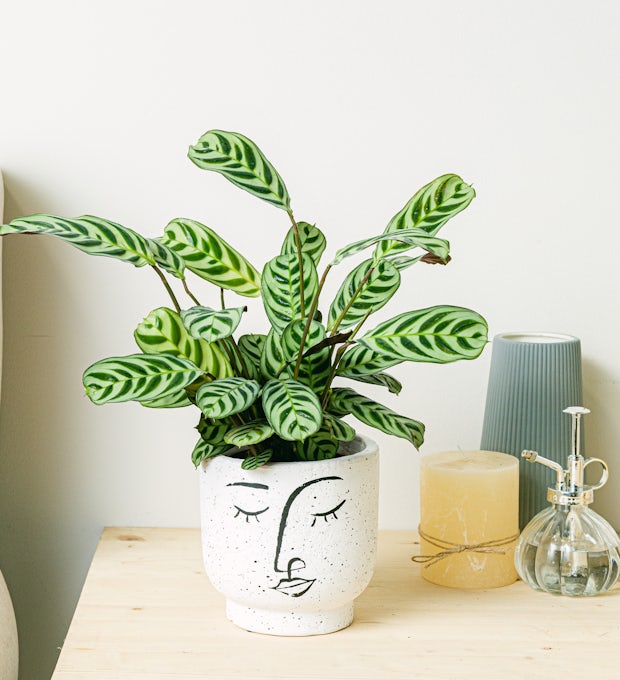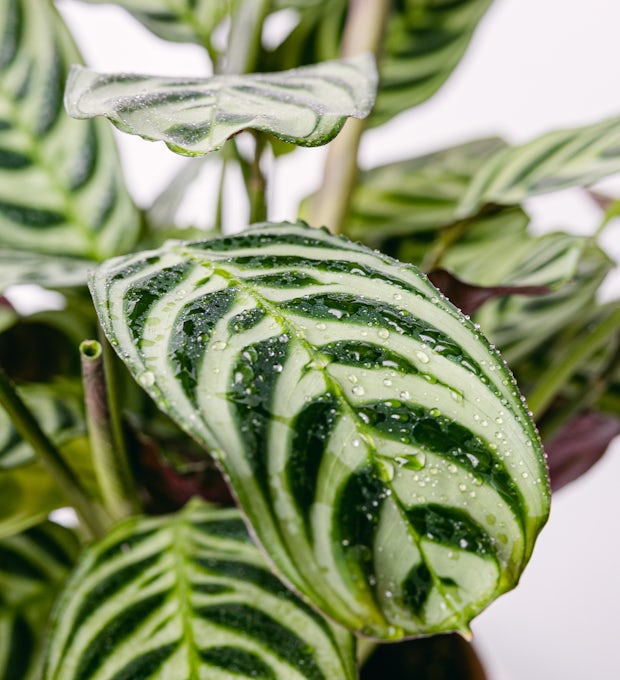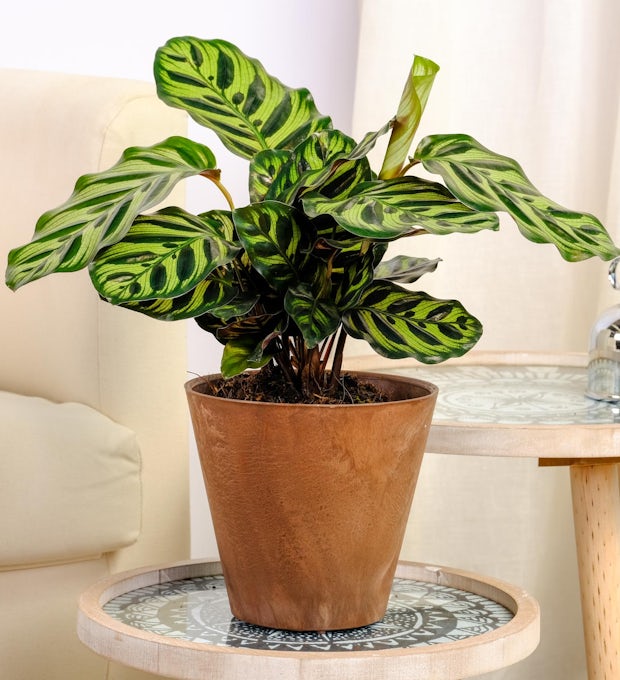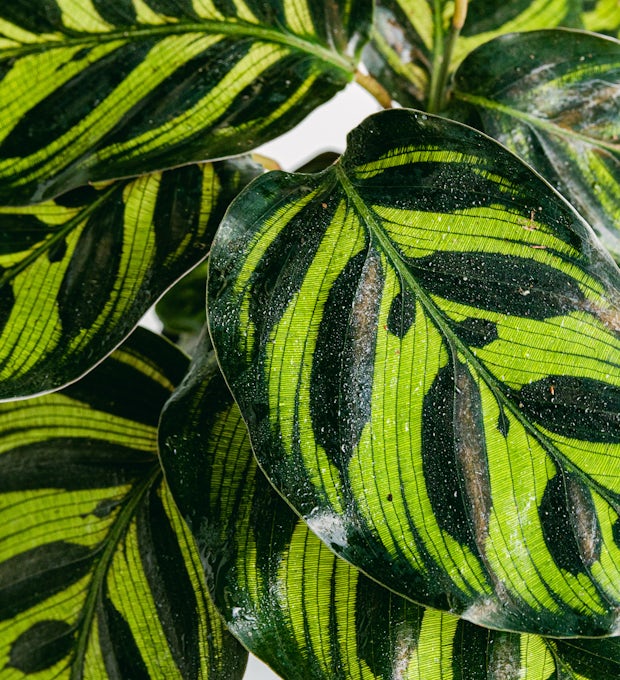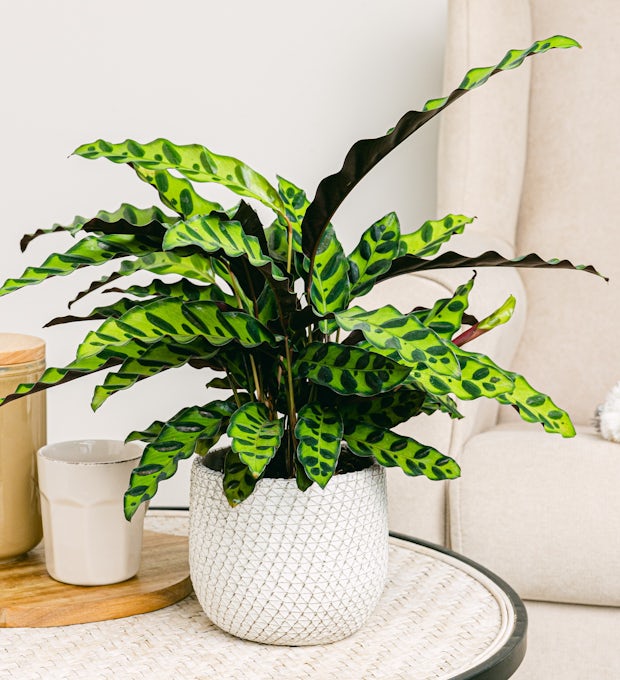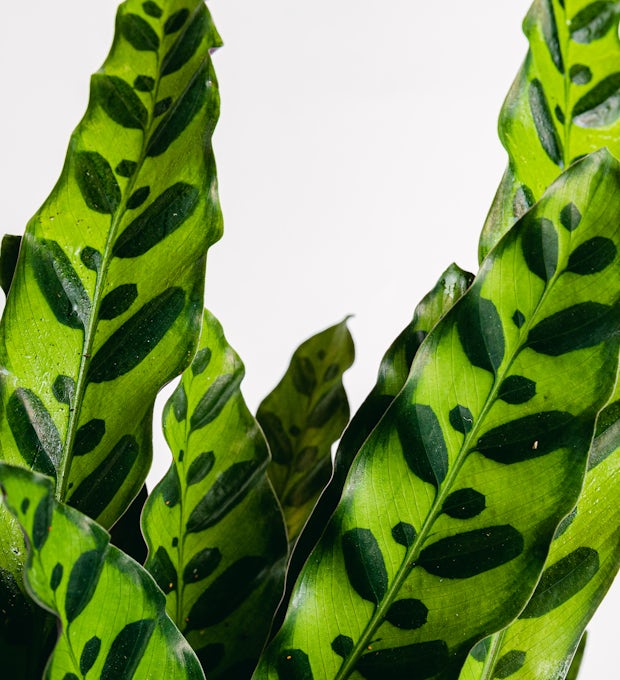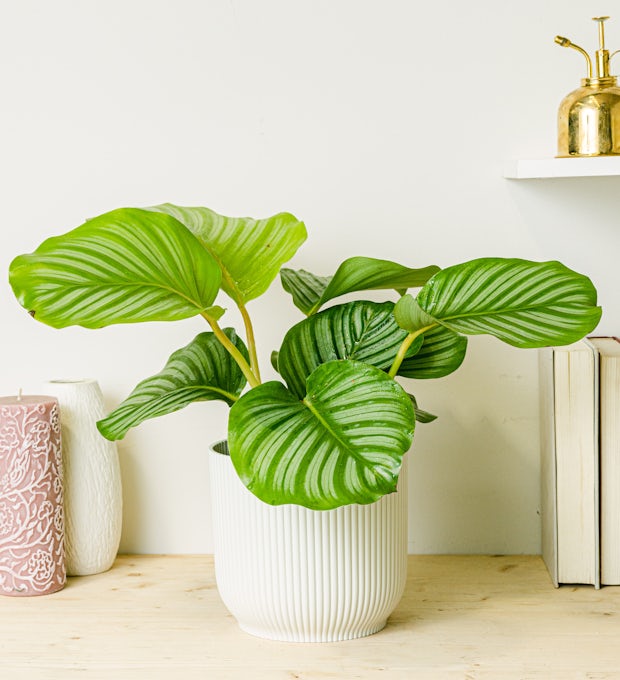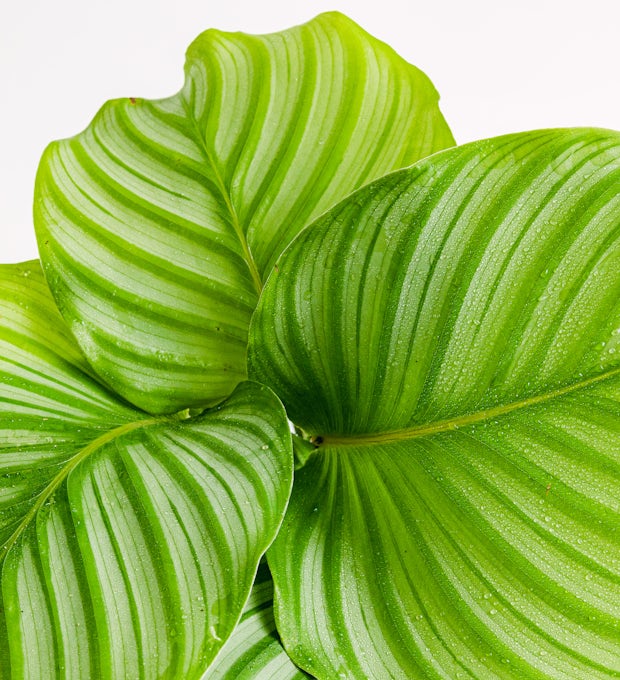Plants can give our homes a natural and calming atmosphere. Calathea is a houseplant that is not only beautiful to look at, but also offers many benefits. In this article, you'll learn why Calathea is the ideal houseplant, what species there are, and how to choose the perfect plant for your home. We will also talk about how to choose the right location for your Calathea and what care and watering needs this plant has. Finally, we will look at the most common problems in Calathea husbandry and give tips on how to solve them.
Why Calathea is the ideal houseplant
Calathea is one of the most popular houseplants, and for good reason. In addition to being extremely decorative, this plant has many health benefits. Calathea is known for filtering pollutants from the air, thus ensuring better air quality in the room. It can also help reduce stress and improve concentration.
But it's not just its health benefits that make Calathea an ideal houseplant. This plant is also extremely easy to care for and undemanding. It simply needs a bright location away from direct sunlight and regular watering. However, you should make sure that the soil always remains slightly moist, but does not get too wet.
Another advantage of Calathea is its versatility. There are many different species of Calathea, which differ in color and pattern. So everyone will find the right plant for their taste and furnishing style.
In conclusion, Calathea is the ideal houseplant because it is not only aesthetically pleasing, but also offers many health benefits and is extremely easy to care for. With a Calathea in the room, you create a pleasant and healthy indoor climate and at the same time bring some greenery into
The different species of Calathea and their peculiarities
Calathea is a genus of houseplants that stands out for its spectacular leaves. There are many different species of Calathea, which vary in size, shape, and color. One of the best known is Calathea Zebrina, which is known for its striped leaves. Another species is Calathea Lancifolia, which is also known as the "lance leaf" due to its narrow, elongated leaves. Calathea orbifolia has large, round leaves with silver stripes. Calathea roseopicta is known for its dark, almost black leaves with pink or white spots. Each type of Calathea has its own peculiarities and requirements for care and location. Some species prefer a shady location, while others need a lot of light. Some require regular watering and hydration, while others are more sensitive to excess water. It is important to note that some species of Calathea are more sensitive than others and can have problems more frequently. So, it's worth doing your research ahead of time and making sure you're choosing the right type of Calathea for your lifestyle and home.
We ship plants to all locations, you can see more options here.
The right location for your Calathea
The right location for your Calathea is crucial for its well-being and development. These plants prefer bright, indirect light, as direct sunlight can cause leaf burns. Place your Calathea in an area that receives adequate light but is protected from direct sunlight. A window with a light curtain or some distance from a bright window are good options. Calathea also grows well in rooms with artificial light, as long as it is sufficient.
Humidity is also an important factor in Calathea's well-being. These plants are native to tropical regions and therefore require high humidity. Place your Calathea near other plants or use a humidifier to increase the humidity in the area. You can also place a saucer of water next to the plant to increase the humidity.
Make sure that the temperature at which your Calathea is located remains constant and is not subject to sudden changes in temperature. The ideal temperature is between 18 and 24 degrees Celsius. avoid drafts and cold air currents, as they can make Calathea sensitive.
By choosing the right location for your Calathea and meeting its needs for light, humidity and temperature, you will create optimal conditions for its growth and ensure that it remains healthy and
We ship plants to all locations, you can see more options here.
The optimal care and watering of your Calathea
A Calathea is a beautiful houseplant, but it is a bit more demanding to care for. To keep your Calathea healthy and happy for a long time, there are a few things you should keep in mind. The optimal care and watering of your Calathea depends on various factors, such as the type of Calathea and its location. Calathea usually prefers a semi-shaded site with Indirect Light and humidity of around 60%. Be careful not to expose your Calathea to direct sunlight or place it near heaters or air conditioners. Watering should be done regularly, but not give too much water at once. A good indicator of whether your Calathea needs water is to feel the soil. If it feels dry to the touch, you should water it. However, make sure that there is no waterlogging, as this can lead to root rot. A good way to increase humidity is to spray the leaves with water or place a humidifier near the plant. With these tips, you should be able to take the best care of your Calathea and allow her to live a healthy and happy life in your home.
Common postural problems in Calathea and how to solve them
Problems can often arise when keeping Calathea, but with some simple solutions, you can successfully overcome them. A common problem is the appearance of yellow leaves. This may be due to too much direct sunlight or insufficient humidity. Place your Calathea in a place with indirect light and ensure adequate humidity by spraying it regularly or placing it on a saucer filled with water. Another problem is the drying out of the leaf tips. This may be due to air that is too dry or insufficient watering. Make sure that the soil is always slightly moist, but avoid waterlogging. Increase the humidity by placing a bowl of water near the plant or using a humidifier. If your Calathea is infested with spider mites, you can wipe it down with a mixture of water and mild soapy water, or treat it with an insecticide-free pesticide. However, be sure to follow the manufacturer's instructions. By identifying these common problems and taking appropriate action, you can ensure that your Calathea
remains healthy and robust.Calathea as a decorative element in your home
Calathea is not only a popular houseplant, but also a decorative element that will give your home a natural and lively atmosphere. With its eye-catching leaves in different colors and patterns, Calathea can enhance any room and become an eye-catcher. The bright green tones, striking leaf pattern and unique texture make it a real eye-catcher. Whether you place it as a solitary plant on the windowsill or as part of a green corner in your living room, the Calathea is sure to turn heads.
In addition, Calathea also has a calming effect on the viewer. Their gentle movements of the leaves, which open and close depending on the time of day, create a relaxed and harmonious atmosphere. It can therefore serve as a natural stress reliever and create a peaceful atmosphere in your home.
Another advantage of Calathea is its adaptability to different furnishing styles. Whether modern, minimalist or classic, the Calathea blends seamlessly into any interior and brings a touch of nature into the home. Their diverse leaf patterns and shapes offer countless opportunities to reflect your personal style preferences.
So, if you are looking for a houseplant that not only looks beautiful but also adds decorative value to your home, then Calathea is the perfect choice. It brings life to every room, ensures relaxation and fits seamlessly into your individual living ambience.
Tips for Buying a healthy and robust Calathea
When buying a healthy and robust Calathea, there are a few tips to keep in mind to ensure that you are getting a high-quality plant. First of all, you should make sure that the leaves of the Calathea are free of spots, holes, or discoloration. This often indicates pests or diseases. It's also important to check the leaves for signs of dehydration or yellowing, as this may indicate inadequate watering.
You should also check the root ball of the plant. Ideally, the roots should look healthy and vigorous and not be rotten or mushy. Another important aspect is the size of the plant. Be sure to choose a Calathea that fits the room in which it will be placed in terms of size.
It is also advisable to look for a Calathea that already has buds or flowers. This indicates that the plant is in good condition and thriving in the given conditions. Finally, it is helpful to ask a dealer or nursery you trust about the origin of the plant. A Calathea from a high-quality source often has a better chance of healthy growth.
By following these tips, you can ensure that you choose a healthy and robust Calathea for your home. A well-maintained Calathea will not only be a beautiful addition to your interior, but it will also be an eye-catcher with its impressive leaf patterns and air-purifying effect.
Calathea is undoubtedly an ideal houseplant, which convinces not only for its unique beauty, but also for its low-maintenance properties. With the different types of Calathea, you can find the perfect plant for your home, and with the right placement and care, it will ensure that it remains healthy and robust. The most common problems in keeping Calathea can be solved by familiarizing yourself with their needs and acting accordingly. And don't forget that Calathea is not only a plant, but also a decorative element in your home. It can beautify rooms and create a relaxed atmosphere. When buying a healthy and robust Calathea, you should make sure that it has strong leaves and is free of diseases or pests. Remember that each plant has its own personality. So find the one that suits you and your home. Calathea can not only beautify your home, but also awaken your love for nature. So why not choose a Calathea for your home today and enjoy its beauty?
Finally, I would like to encourage you to continue to discover your love for nature. There are so many fascinating plant species waiting to be discovered. Take the opportunity to learn more about them and bring them into your home. Plants have a wonderful way of calming us through their presence and connecting us with nature. So take your time to explore the world of plants and find out which one suits you best. You may be surprised at how much joy and inspiration they can give you
